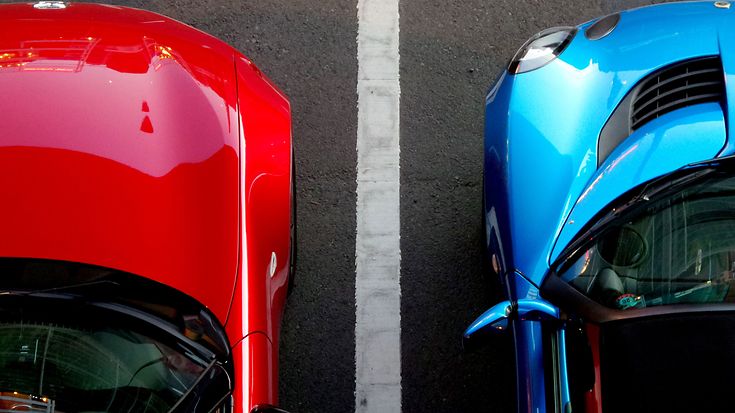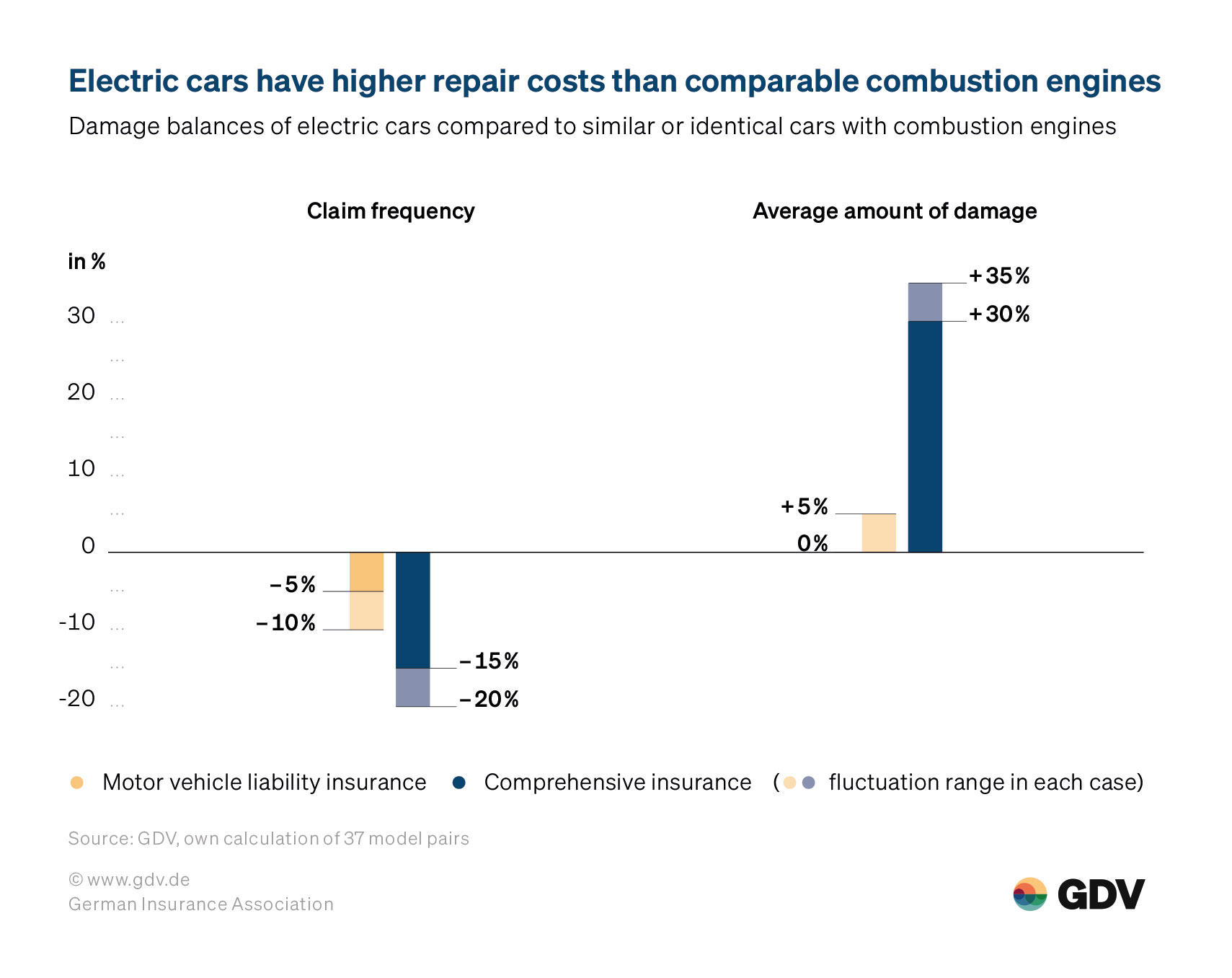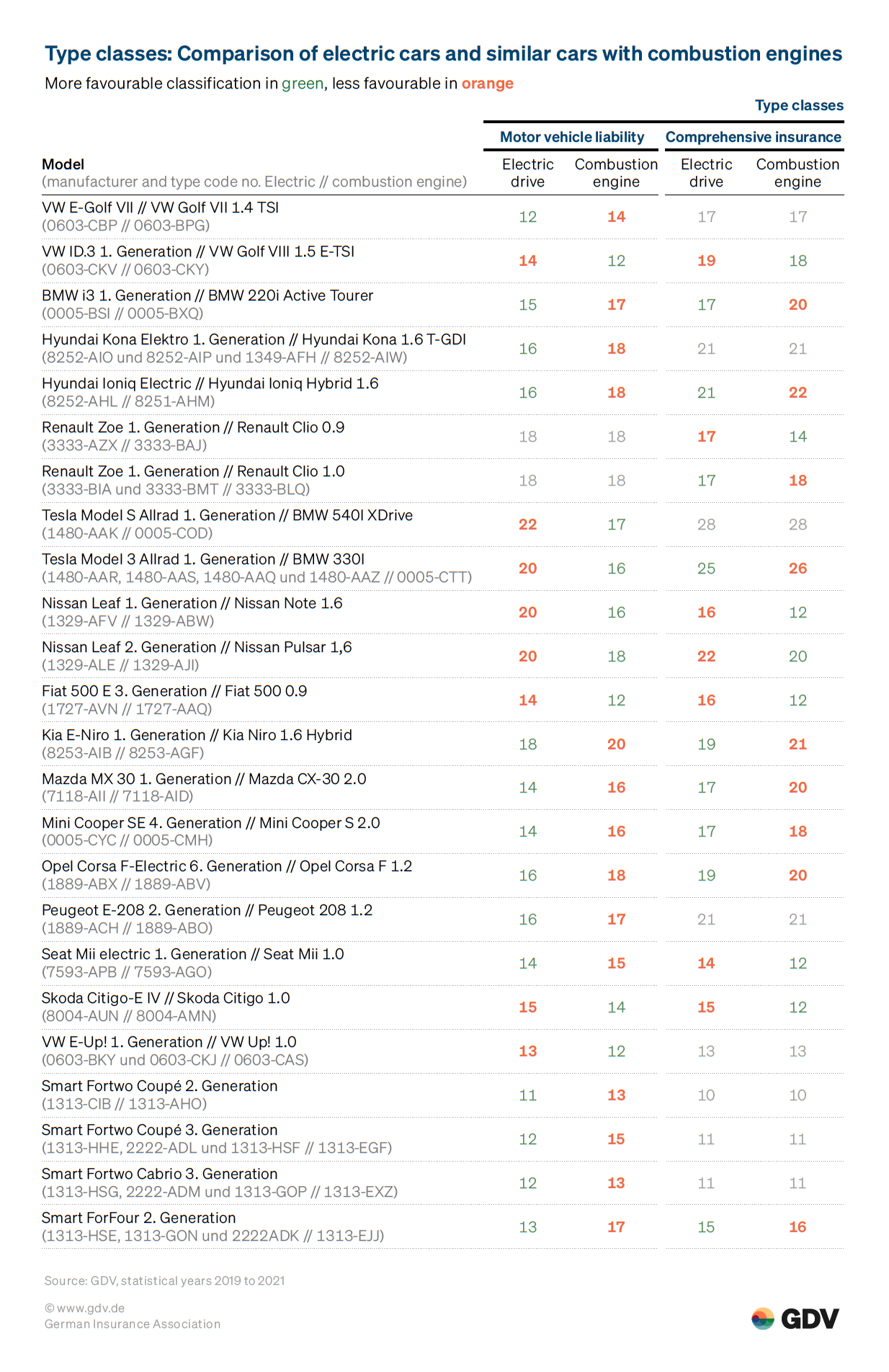Study: E-cars are a third more expensive to repair than comparable combustion cars
As part of the mobility transition, more and more drivers are switching to electric vehicles. A key argument for switching is often the running costs, including repair costs after accidents. GDV has now examined these.

In the discussion about the costs of e-mobility, the insurance industry has come to an alarming conclusion in a new study. "The repair costs of electric cars are much higher. On average, they are 30 to 35 percent higher than those of comparable cars with combustion engines", said GDV Chief Executive Officer Jörg Asmussen, referring to a new study by the Association.
In this context, Asmussen emphasised the support of insurers for the mobility transition. "In view of the ecological challenge of climate change, the fact that we as a society will no longer be using fossil fuels to power our vehicles in the future is and remains the only way forward", said the GDV CEO. "We insurers want to accompany this change and play a positive role in shaping it, which is why we are warning of this development at an early stage".
In this light, Asmussen also referred to the second key finding of the study: "In motor vehicle liability insurance - i.e. accidents in which one car causes damage to others - electric cars cause five to ten percent fewer accidents on average than comparable combustion engines". The advantage of electric cars is even clearer when it comes to comprehensive insurance, i.e. damage to a driver’s own car. "On average, electric cars cause around 20 percent less damage", Asmussen said.
Both factors - more expensive, but less damage from electric cars - are taken into account when calculating the individual type classes of the respective model.
Several reasons exist for the high repair costs for e-cars
According to Christoph Lauterwasser, Managing Director of the Allianz Technology Centre, there are four main reasons for the significantly higher repair costs for electric cars compared to cars with combustion engines. First of all, he mentioned the high costs of damaged traction batteries and the need for improved replacement criteria, diagnosis and repair options. In addition, uncertainty when dealing with damaged electric cars leads to high costs, because, for example, cars are stored in quarantine for a very long time or become total losses when placed out of precaution in immersion baths in extinguishing containers. Lauterwasser also criticised long downtimes and high hourly rates in garages for work on electric cars.
"We have more than 125 years of experience with combustion engines, but only around 10 years with modern electric vehicles”. Garages, towing companies, fire departments and experts therefore still lack experience and best practice in dealing with severely damaged electric cars. "In view of the anticipated growth, there is therefore a clear need for action", Lauterwasser said.
Manufacturers and garages should counteract the high repair costs
In order to put a stop this development, the insurance industry has defined specific demands for manufacturers, Heinz Gressel, Chairman of the GDV Motor Vehicle Committee, emphasised. Right from the vehicle design stage, batteries need to provide the best possible protection against damage caused by accidents. At the same time, garages and experts should be provided with meaningful diagnostic data on the condition of batteries after accidents.
In addition, Gressel said that financially and ecologically sustainable instructions for the repair and/or partial replacement of damaged batteries need to be available. Precise criteria for dealing with electric cars involved in accidents needs to be developed. Garages, towing companies and fire departments should be comprehensively certified.
According to Gressel, insurers require garages and assessors to quickly check batteries in damaged electric cars, rule out fire hazards at an early stage and keep quarantine storage periods as short as possible. In addition, more specialists need to be trained and educated in the repair of electric cars. "If the costs of electromobility get out of hand, their acceptance will also fall. We must not risk that", Gressel said.
Background: The GDV study
For the current GDV study, 37 pairs were formed of electric cars and cars with combustion engines that were as similar as possible. This was easy in some cases because there were models of the same design, for example the electric Smart with the Smart or the electric Golf VII with the Golf VII. It was more difficult for other models. In such cases, GDV experts found suitable peer vehicles. We then evaluated how the frequency and amount of claims in both motor vehicle liability and comprehensive insurance developed over three years.


